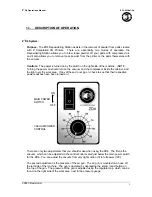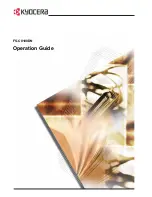
193
font
The complete set of a given size of type, including
characters, symbols, figures, punctuation marks,
ligatures, signs, and accents. To fully describe a font, you
must specify seven characteristics:
1.
typeface (Courier New, Helvetica, Swiss, etc.)
2.
spacing (proportional or monospaced)
3.
type size (12 point, 14 point, etc.)
4.
scale factor (character height/width ratio)
5.
type style (Roman or italic)
6.
character weight (bold, normal, etc.)
7.
character proportion (normal, compressed,
expanded).
font, monospaced
Also called fixed-pitch font and mono-font. Every
character, regardless or horizontal size, occupies the
same amount of font pattern space. All monospaced
fonts use specific pitch size settings. Monospaced fonts
are someTimes New Roman used when strict character
alignment is desired (tables, charts, spreadsheets, etc.).
font name
see typeface.
font pattern
A font pattern is the matrix of pixels which represents a
character, symbol, or image.
font, proportional
A font in which the width of a character cell varies with
the width of the character. For example, “i” takes less
space to print than “m.” Using proportional fonts
generally increases the readabilty of printed documents,
giving text a typeset appearance.
font weight
The thickness of the lines making up a character. For
example, “bold” and “light” are different font weights.
font width
The measurement of the width of a character cell in dots.
gateway
A hardware device that translates data between two
incompatible networks.
gateway address
The IP address of a gateway.
hammer
The hammer spring with a hammer tip mounted onto it.
hammer spring
The flat piece of metal, made of spring steel, which
supports and pushes the hammer tip.
hammer tip
The small, round point, located near the end of the
hammer spring, which strikes the ribbon and leaves a dot
on the paper.
hex codes
Based on a numeral system with a radix of 16.
host (computer)
The computer that stores, processes, and sends data to
be printed, which communicates directly with the printer.
The term “host” specifies the controlling computer, since
modern printers are themselves microprocessor-
controlled computer systems.
Summary of Contents for 6500 DBCS
Page 2: ......
Page 6: ......
Page 10: ...Table of Contents...
Page 20: ...20 Chapter 1 Printer Overview...
Page 28: ...28 Chapter 2 Printer Component Locations...
Page 114: ...114 Chapter 4 Printer Information Menu...
Page 128: ...128 Chapter 5 IEEE 1284 Parallel Interface...
Page 184: ...184 Appendix A Printing Rates...
Page 188: ...188 Appendix B Printing Speed...
Page 212: ...212 Communication Statements...
Page 228: ...228...
Page 229: ......
















































